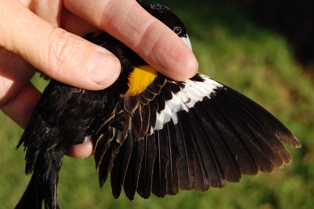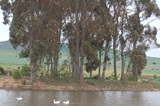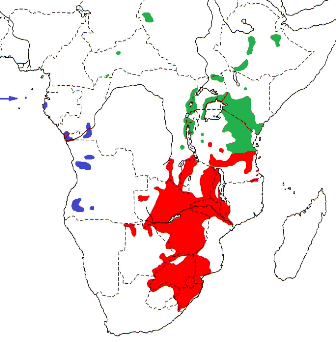Weaver news

 The White-winged Widowbird Euplectes albonotatus is common in East and south-east Africa (see map below), based on Birds of Africa). It occurs tall bushed grassland, generally below 2000m. It is a small widowbird with a fan-shaped tail. The male in breeding plumage is black with a white wing-patch and wing edgings, and white underwing; in southern African birds the epaulet (shoulder patch) is yellow (above left), while in East African birds it is cinnamon-rufous. Females (above right) and non-breeding birds may be identified in flight by the longish tail, white and yellow/rufous wing patches, and white underwing.
The White-winged Widowbird established a breeding population from escapees in the Sydney area in Australia, but apparently was extinct there by 1976 (read more here).
The White-winged Widowbird feeds on grass seeds, nectar of Aloe marlothii, and insects, including termite alates. This species is polygynous, with up to 4 females per male. The nest (right, from phown 1032 by Dawie de Swardt) is oval with a large side entrance. The male builds the nest frame of dry and semi-green grass, supported by upright grass stems. The female adds a stouter weaving of finer dry grass, usually Sporobolus, inside the frame. Some nests have a small porch of projecting grassheads. Nests are usually sited below 1.5 m. Eggs may be laid before the nest is lined. Old nests may be used by Orange-breasted (Zebra) Waxbills. There is one photo PHOWN record from the Free State and 15 Nest Record Cards from Angola (see PHOWN summary ). Submit any weaver nest records to PHOWN (PHOtos of Weaver Nests) via the Virtual Museum upload site. PHOWN summary Previous Wedn: Nelicourvi Weaver Full weaver species list |











 Three subspecies are currently recognised:
Three subspecies are currently recognised:
